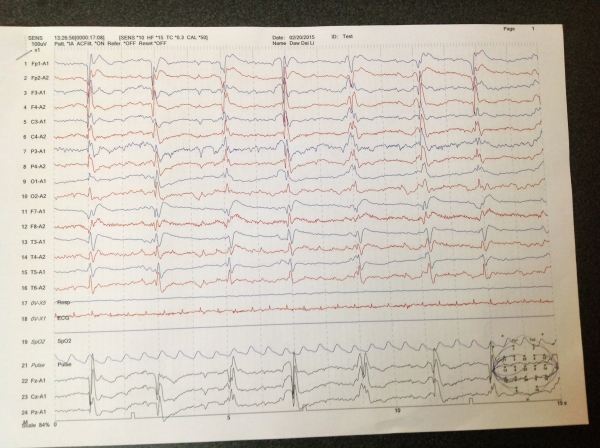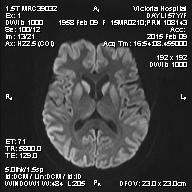Session Information
Date: Thursday, June 23, 2016
Session Title: Other
Session Time: 12:00pm-1:30pm
Location: Exhibit Hall located in Hall B, Level 2
Objective: To highlight that Creutzfeldt-Jakob Disease can present predominantly with movement disorder.
Background: Creutzfeldt-jakob Disease (CJD) is a rapidly progressive spongioform degeneration of the brain secondary to the accumulation of misfolded prion proteins (PRNPs). It is a rare disease, with an estimated annual incidence of one per million people. It has four subtypes such as sporadic, familial, iatrogenic and variant forms. The typical clinical presentation includes rapidly progressive dementia, myoclonus and ataxia. Several movement disorders such as myoclonus, dystonia, tremor and parkinsonism have been described in patients with CJD.
Results: A 57 year old single lady came to our hospital for one month symptoms of postural imbalance and tremor. Examination revealed ataxia, hand tremor which was progressively worse, scanning dysarthria and bilateral cerebellar signs. Two weeks after appearance of these symptoms, she had poor memory and inappropriate talk. Later, she became to have bradykinesia, emotional lability and myoclonic jerks which persisted until late stage of disease. EEG showed generalized background slowing with periodic sharp wave complexes (PSWs) over fronto-parietal area that became generalized in second time EEG tracing (Figure.1). MRI (Brain) revealed hyperintense signal along cortical ribbon and both basal ganglia (Figure.2). Apart from transient metabolic derangement, other routine investigations were unremarkable. According to WHO CDC criteria, 2010, our patient had rapidly progressive dementia plus all 4 clinical features of myoclonus, cerebellar signs, extrapyramidal signs, akinetic mutism; and positive results of 2 laboratory tests: a typical EEG (PSWs), MRI high signal abnormalities in caudate nucleus and putamen on DWI and no evidence that indicate an alternative diagnosis on routine investigations. Patient had no history of travelling to abroad and eating beef or imported meat and no similar family history, therefore variant CJD and familial CJD were ruled out. Finally our patient was a probable case of sporadic CJD. Patient succumbed 5 months after onset.

Conclusions: Our finding suggests that movement disorder may be the predominant feature of prion disease and early recognition and high suspicion is important to get the diagnosis.
Reference 1. CJD (Creutzfeldt-Jakob Disease, Classic). Centers for Disease Control and Prevention. 2008-02-26. Retrieved 2009-06-20.
To cite this abstract in AMA style:
A.A. Sann, M.M. Zaw, T.L. Choie. Creutzfeldt-Jakob disease presenting predominantly with movement disorder: A case report [abstract]. Mov Disord. 2016; 31 (suppl 2). https://www.mdsabstracts.org/abstract/creutzfeldt-jakob-disease-presenting-predominantly-with-movement-disorder-a-case-report/. Accessed April 2, 2025.« Back to 2016 International Congress
MDS Abstracts - https://www.mdsabstracts.org/abstract/creutzfeldt-jakob-disease-presenting-predominantly-with-movement-disorder-a-case-report/
